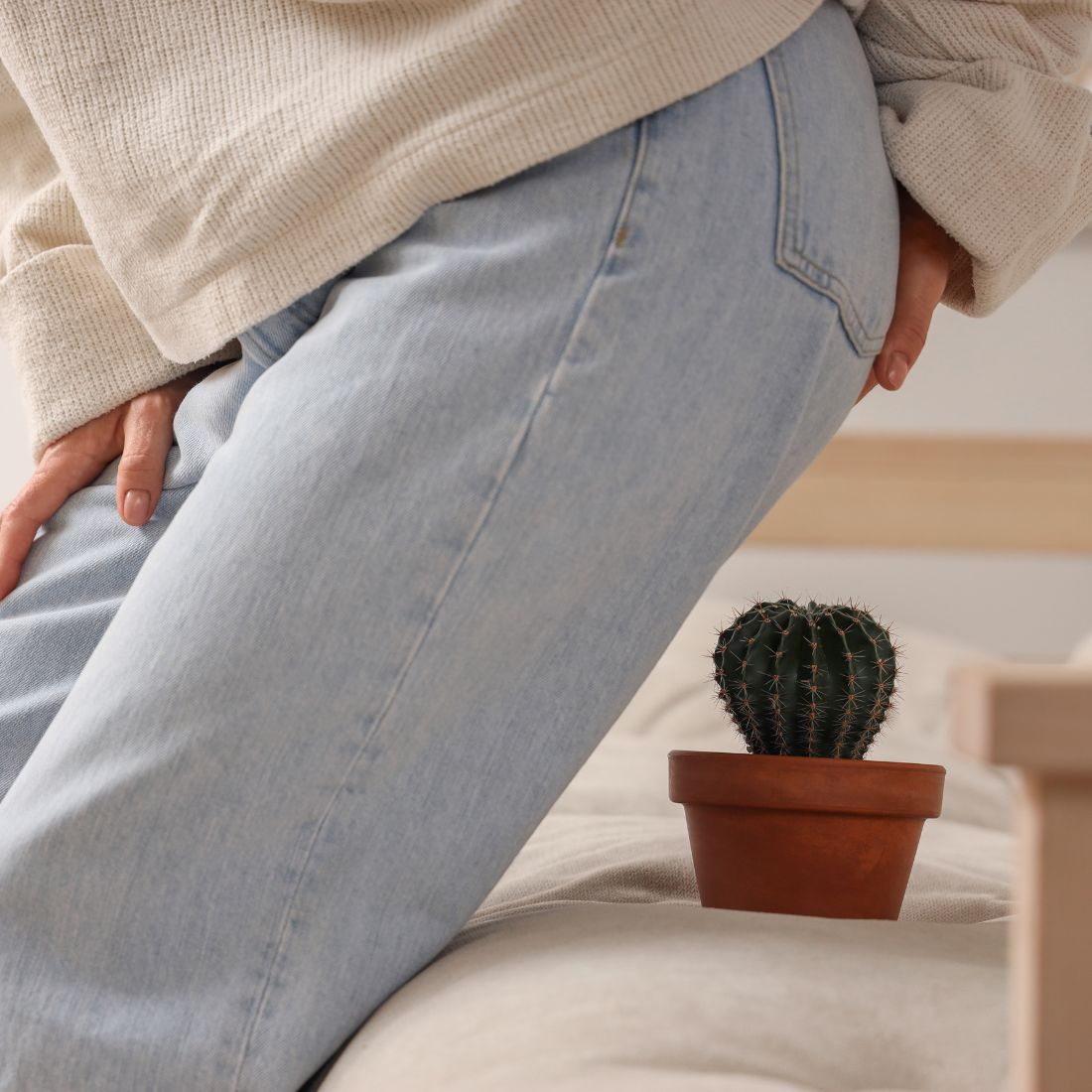Here's What You Need to Know
By Dr. Peter Klapper Ph.D.
Hemorrhoids, commonly known as piles, are a prevalent medical condition that affects millions of people worldwide. Much like relatives gathering at a family reunion, they share some traits but also have their own unique characteristics. Imagine you're on the verge of a quiet evening, but suddenly, a familiar itch or an uncomfortable sensation makes its presence known. Before you panic or dismiss it, it's essential to understand the distinctions between external hemorrhoids and internal hemorrhoids.
So, let's embark on a journey through the realm of rectal woes and explore the differences between these pesky little troublemakers.
External Hemorrhoids:
External hemorrhoids occur when the blood vessels surrounding the anus become swollen or inflamed due to increased pressure in the area. This pressure can stem from factors like straining during bowel movements, extended periods of sitting or standing, obesity, pregnancy, or chronic constipation. Unlike internal hemorrhoids, which form inside the rectum, external hemorrhoids develop under the skin around the anus opening, often appearing as small bumps that are palpable or visible externally. External hemorrhoids can lead to discomfort, itching, and pain, particularly during bowel movements.
Characteristics or external hemorrhoids:
Visible Swelling: Swelling and inflammation is often present around the anus when you have external hemorrhoids. Due to the swelling of the lump or bump near the anus can be tender to touch.
Discomfort or pain: The anal area may be sensitive or tender, particularly during bowel movements or extended periods of sitting. This pain can make it challenging to clean the anal area due to discomfort or pain.
Anal itching and Irritation: External hemorrhoids can cause itching and irritation due to their location near sensitive skin in the anal region.
Thrombosed hemorrhoid: External hemorrhoids can develop blood clots, leading to a condition called thrombosed hemorrhoids, which can cause severe pain and swelling.
Internal Hemorrhoids:
Internal hemorrhoids form inside the rectum when the veins become swollen or inflamed due to increased pressure. This pressure can result from various factors, including straining during bowel movements, chronic constipation or diarrhea, obesity, pregnancy, or prolonged sitting. While internal hemorrhoids typically don't cause pain, they may lead to discomfort.
Characteristics of internal hemorrhoids:
Location: Internal hemorrhoids cannot be seen or felt externally and are diagnosed through internal examination by a healthcare professional.
Discomfort or pain: Internal hemorrhoids may cause discomfort, pain, or itching in the anal region, particularly during bowel movements.
Anal itching or leaking: Itching near the anus may result from irritation caused by internal hemorrhoids. Some people may notice mucus discharge from the anus as a symptom of internal hemorrhoids.
Rectal bleeding: The most common symptom of internal hemorrhoids is bright red blood, which may be noticed on toilet paper or on stool during bowel movements. Bleeding hemorrhoids are often due to large internal hemorrhoids.
Sensation of Incomplete Bowel Movement: Large internal hemorrhoids can cause a feeling of incomplete bowel movement or the need to strain during bowel movements.
Prolapsed hemorrhoids: In some cases, internal hemorrhoids may protrude outside the anus during bowel movements, causing discomfort.
External and internal hemorrhoids differ in their location, symptoms, and characteristics, but both can cause discomfort and affect quality of life if left untreated. Recognizing the differences between external and internal hemorrhoids is crucial for proper diagnosis and treatment.
If you experience symptoms of hemorrhoids, such as bleeding, pain, or itching, consult a healthcare professional for evaluation and personalized management strategies. With proper care and treatment, you can alleviate symptoms and improve your overall rectal health and well-being.


